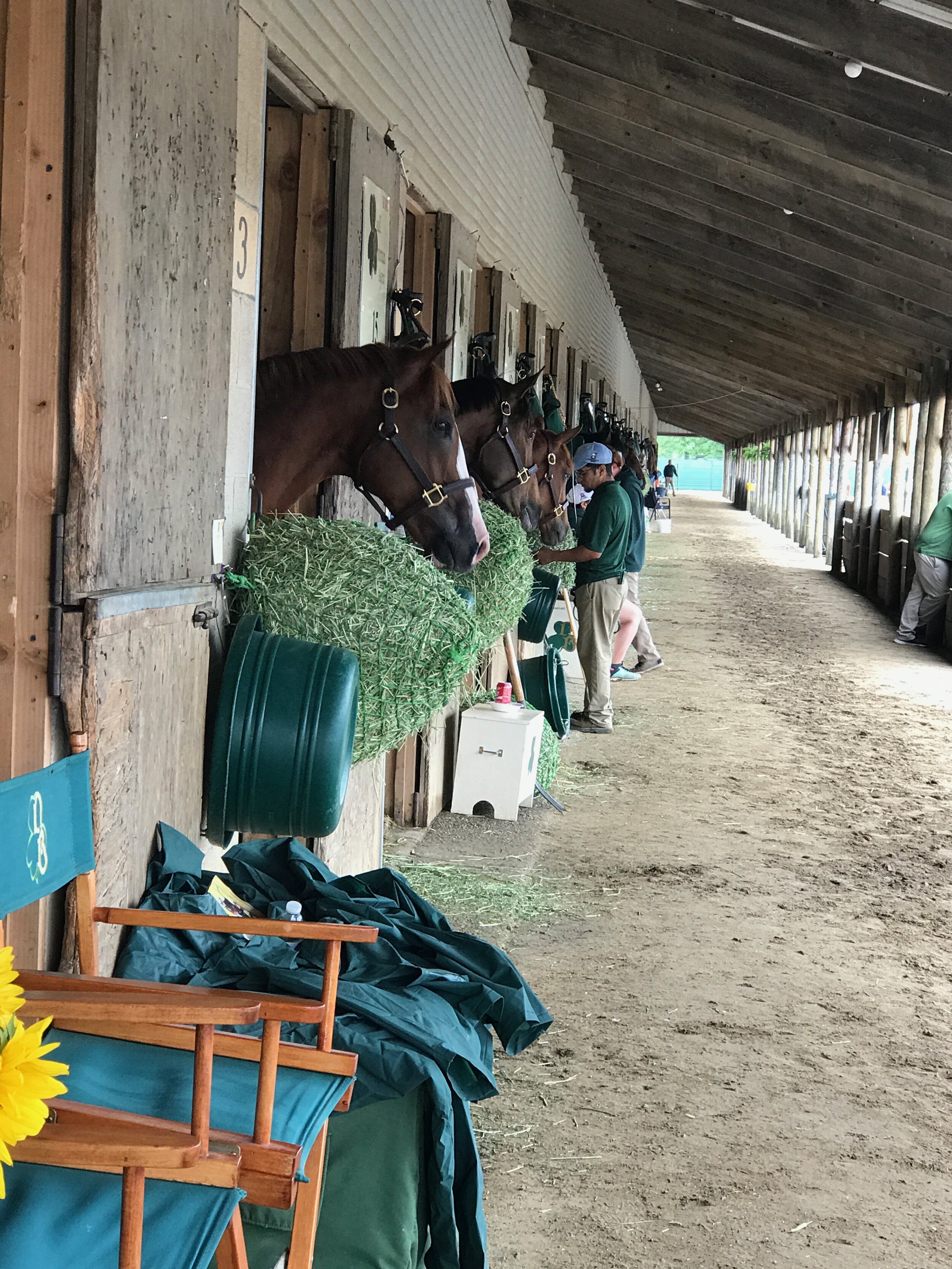Why are gastric ulcers still a significant concern for horses in training?
/By Catherine Rudenko
With the advances in scoping and increased awareness of gastric ulcers, along with the high prevalence found in horses in training, one may wonder, Why is this condition still such a problem? Do we not know enough to prevent this condition from recurring?
The short answer is that much is known, and for certain, there are effective medications and many feeds and supplements designed to manage the condition. The underlying problem is that the factors leading to ulceration, at least the most significant ones, are fundamental to the routine and management of a horse in training. Quite simply, the environment and exercise required are conducive to development of ulcers. Horses in training will always be at risk from this condition, and it is important to manage our expectation of how much influence we can have on ulcers developing, and our ability to prevent recurrence.
Clarifying Gastric Ulceration
Before considering how and why ulcers are a recurrent problem, it is helpful to understand the different types of gastric ulceration as the term most commonly used, Equine Gastric Ulcer Syndrome (EGUS), is an umbrella term which represents two distinct conditions.
The term EGUS came into use in 1999 and represented ulceration of the two separate locations in the stomach where ulcers are found: the squamous and glandular regions. The two regions are functionally different, and ulceration in either location has different causative factors. This is important when considering what can be managed from a risk point of view at a racing yard. The term EGUS is now split into two categories: Equine Squamous Gastric Disease (ESGD) and Equine Glandular Gastric Disease (EGGD).
ESGD is the most commonly occurring form and the focus of dietary and management interventions. The majority of horses in training have the primary form of ESGD where the stomach functions normally. There is a secondary form that relates to a physical abnormality which causes delayed emptying of the stomach.
The condition ESGD is influenced by the training environment and time spent in training as noted by researchers looking at prevalence of horses out of training compared to those within training. In this case, 37% of untrained thoroughbred racehorses had ESGD and this progressed to 80-100% of horses within two to three months of training. This effect is not unique to thoroughbreds and is seen in other breeds with an ‘active workload’; for example, standardbreds progress from an average of 44% ESGD in the population to 87% when in training. Such research is helpful in understanding two things: firstly, that ulcers in the squamous section can occur outside of training, and that the influence of exercise and dietary changes have a significant effect regardless of breed. Even horses in the leisure category, which are thought of as low risk or at almost no risk at all, can return surprising results in terms of prevalence.
Risk Factors
There are multiple risk factors associated with development of ESGD, some of which are better evidenced than others, and some of which are more influential. These include:
Pasture turnout
Having a diet high in fibre/provision of ‘free choice’ fibre
Choice of alfalfa over other forages
Provision of straw as the only forage source
Restricted access to water
Exceeding 2g of starch per kilogram of body weight
Greater than 6 hours between meals (forage/feed)
Frequency and intensity of exercise
Duration of time spent in a stabled environment combined with exercise
Of these factors, the stabled environment—which influences feeding behaviour—and exercise are the most significant factors. The influence of diet in the unexercised horse can be significant, however once removed from pasture, and a training program is entered into, ulceration will occur as these factors are more dominant. An Australian study of horses in training noted the effect of time spent in training, with an increase in risk factor of 1.7 fold for every week spent in training.
Once in training, there is some debate as to whether provision of pasture, either alone or in company, has a significant effect. …












































